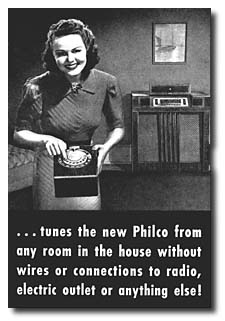At a Hollywood dinner party in the summer of 1940, a movie star from Austria began conversing with her dinner partner, an avant-garde music composer. She was notorious for appearing as the first female frontal nude on film; he was the ‘bad boy’ of music, best known for his musical score in a Dadaist, post-Cubist art film. In her spare time, the bored actress tinkered with inventions such as soda pop in tablet form. In his spare time, the musician wrote an advice for the lovelorn column in Esquire magazine, driven by his interest in endocrinology. It was his interest in glands and her interest in improving her breast size and their mutual hatred of Nazis that led these two into an unlikely partnership.

Ekstase 1933. Seventeen year-old Hedy Kiesler as Eva.
http://retrografix.blogspot.com/2013/08/ekstase-1933.html
Vienna, 1933, nineteen year-old Hedwig “Hedy” Kiesler, pampered daughter of an Austrian banker, the scandalous star of the Czech film Ekstase, married 33 year-old Friedrich “Fritz” Mandl, a munitions manufacturer who owned Hirtenberger Patronen-Fabrik. The marriage lasted four years. After a brief affair with Erich Maria Remarque, Hedy left Mandl for Hollywood. During the time she lived with Mandl, Hedy attended many gatherings where Mandl entertained fascist leaders in hopes of selling his wares. One visitor in particular, Hellmuth Walter, was a mechanical engineer who told Hedy about “his remote-controlled, wakeless torpedo.” Guided by wire and powered by hydrogen peroxide (which left no trace in seawater–thus wakeless), it utilized the standard German system used by planes “of 18 pre-launch selectable frequencies, spaced 100 KHz apart.” Allotting a single frequency to each bomber and his bomb prevented radio interference from other bombers. “Each bomber-missile pair” used one frequency. While an opponent might block the signal, it would take some time to determine which frequency was the right one. According to legend, this was one of many pieces of information Hedy filed in her brain.

George Antheil by Man Ray
Music Division – Bok-Antheil Collection, Library of Congress, Miscellaneous Items in High Demand
http://www.loc.gov/pictures/item/2005680961/
George Antheil was an American-born composer who grew up in a bilingual German-English-speaking

George Antheil composing, 1940s Hollywood, http://otherminds.org/html/Antheilphotos.html
family (although throughout his life, he would downplay the German and play up the bit of Polish in his family). In the face of parental opposition, he was determined to be a composer. George joined the U.S. Army Aviation Corps at age sixteen in 1918 to escape their disapproval. The army certified young George as an inspector of armory artillery ammunition but he did no flying. As he recovered from nasal surgery to improve his ability to withstand high altitudes, the war ended. The episode convinced his parents that Antheil was serious about music and from then on encouraged his career. After several years of study, he moved to Europe. He learned from Igor Stravinsky among others and began giving concerts where his modern style and content provoked or charmed audiences. Concert goers would riot, shout, and yell. Antheil met and eventually married Böski Markus and they lived in an apartment above the legendary bookstore “Shakespeare & Co” and became part of the elite artist circle that included James Joyce, Ernest Hemingway, Man Ray, Pablo Picasso, Ezra Pound, and T.S. Eliot. In 1924, he wrote Ballet mechanique, a piece for “two pianos, three xylophones, four bass drums, tam-tam, electric bells, three airplane propellors, and between four and sixteen synchronized player pianos.”
(for more on Ballet mechanique see: http://www.moma.org/collection/object.php?object_id=91484 )
Hedy’s hobby was inventing, she had already created a bouillon-like tablet that made soda from tap water (reportedly, with assistance from chemists employed by onetime beau, Howard Hughes). Antheil and Lamarr met several times in her Benedict Canyon home, discussing his theories on the pituitary system and increasing her breast size. They both spoke German and were excellent pianists. The two of them hated the Nazi regime. Hedy told George she thought the newly formed Commerce Department’ s National Inventors Council ought to debrief her on what she knew from Mandl’s parties. The NIC was created to speed the path of getting inventions Americans thought might be useful to the war effort to the correct federal entity. About four weeks into their friendship, an event happened that galvanized their activities.

Sinking of the SS City of Benares
http://www.mikekemble.com/ww2/shipresearch.html
CORB, the Children’s Overseas Reception Board, was an arm of the British government charged with sending British children abroad to keep them safe during the Battle of Britain. Some 2,664 children were sent to the Dominions (Australia, Canada, South Africa, and New Zealand) ; the majority to Canada. On September 17, 1940, a U-boat sunk the SS City of Benares, a liner carrying 90 children bound for Canada. The British government did not release the news until September 23rd and the outcry was so great the program was cancelled. Hedy was deeply distressed by the deaths of the children and determined to do all she could to stop the Nazis.

Philco “Mystery Control” a remote that used RF signals received by the main radio console. Manufactured from 1939-1942. Retail price with radio was $162.50, approximately over $2600 today. http://philcorepairbench.com/mystery/history.htm
Why did Hedy choose George Antheil? Hedy wanted to create a remote controlled torpedo. Biographer Richard Rhodes found a reference to the Philco 116RX radio in the notes she and Antheil used. The “Mystery Control,” radio station frequencies (up to eight station call signs) could be tuned by dialing them like a telephone. Supposedly, Hedy and George were trading licks back and forth on the piano, when Hedy wondered, what if a transmitter, on a plane or ship, was synchronized to a receiver, on a glide bomb, with both of them changing frequencies indiscriminately at the same time? A signal could pass through without being jammed. She called it “Frequenzsprungverfahren” – frequency hopping. Antheil, through his experience of writing Ballet mechanique, understood synchronization. As a boys, he and his younger brother Henry would create and break codes as a hobby. Before Henry Antheil’s plane was shot down by the Soviets in June 1940, Henry, an attaché in the American embassy in Finland, would regularly pass coded information to George about the European war. George Antheil used that information to write the book The Shape of the War to Come. Since coming to Hollywood, George gained valuable experience with radio electronics and recording as he was writing music for films. That he also had experience in munitions made him the perfect collaborator.
Together, they worked for months on three inventions: a magnetic proximity shell, the radio-controlled torpedo, and the “secret communication system.” While there are official drawings for the patent application, as Richard Rhodes explains, the part of a patent that describes the practice of how the idea works is intentionally ambiguous—both to protect the design from competitors and to enable claims against any competing claims. They way Antheil and Lamarr illustrated their idea was to use the concept of the code-punched player-piano rolls whose perforations were “punched in identical patterns of random holes” (Butler 79). Both the ship’s transmitter and the torpedo also held “a motor and mechanical switches.” Upon launch, the motors would drive the ‘ribbons’ as Antheil and Lamarr called the rolls, “and the holes in the paper would change the frequency settings of both the transmitter and receiver,” allowing the signal between a ship and its torpedo to be very short and to “hop frequency to frequency” (Rhodes). They used a series of condensers each of which would use “a different frequency on the carrier wave.” George chose to use eighty-eight hops—the number of keys on a piano (Rhodes .

Modern CD cover, Guy Livingston. http://www.guylivingston.com/content/discs.shtml
For a while, the Navy investigated several of their inventions and certainly the Navy needed someone’s help when it came to torpedoes. After the First World War ended, very little money was being spent on research which was done on lighter, practice torpedoes that “ran too deep, missing their targets entirely.” When the Japanese attacked the Philippines following the attack on Pearl Harbor, live torpedoes missed targets, ran too deep, exploded too soon, did not explode at all, or failed to have enough power to sink the targets. The magnetic exploder proximity fuse could not find the enemy (Rhodes 184-186). Ultimately though, the Patent Office issued Lamarr and Antheil a patent for the Secret Communication System and the NIC leaked the story to the New York Times. The Navy did not use frequency hopping until the 1962 Bay of Pigs incident. George Antheil died in 1959.

Algiers, 1938
http://www.imdb.com/title/tt0029855/
Frequency hopping spread spectrum (FHSS) became the basis for IEEE standard 802.11 Wireless LAN MAC and PHY, and FHSS is the foundation for Bluetooth (IEEE 802.15.1) technology. Bluetooth was intend for portable devices and used daily by millions of people. Most manufacturers and carriers use DSSS (Direct-Sequence Spread Spectrum) which “creates a redundant bit pattern for each bit transmitted” making data recovery easier in the event of damage (Conlan 679).
When the FCC ruled that the unused frequencies on the ISM band should be released for unlicensed use in 1985, commercial research into wireless technology began in earnest. Pioneers in the field rediscovered Hedy and George’s invention. One of these engineers was Dave Hughes who wanted to beat “evil empire phone companies” by giving rural schools the same kind of Internet access a T1 line can provide. With a grant from the National Science Foundation, he began his research and when found out about Lamarr and Antheil he posted the information on Stewart Brand’s Well. Hughes was able to enlist members on the Well to ensure Hedy (who was 82 by then) received the Electronic Frontier Foundation’s Pioneer Award in 1997.
Sources:
Butler, Alun. “Brunette Sinks Battleship”. New Scientist 160: 2165/6/7, (Dec 1998 Jan 1999), 78-79. Print.
Conlan, Patrick J. Cisco Network Professional’s Advanced Internetworking guide (CCNP Series). Indianapolis: Wiley Publishing, 2009. Google books, accessed 30 April 2014.
Lehrman, Paul D. “The Revival of George Antheil’s 1924 <i>Ballet Mécanique</i>.” Master’s thesis, Lesley College, 2000. Accessed March 30, 2014. http://www.paul-lehrman.com.
Piccirillo, Richard. <i>The Origins of the Anti-ship Guided Missile</i>. Arlington: 1997. Quoted in Rhodes.
Rhodes, Richard. <i>Hedy’s Folly: The Life and Breakthrough Inventions of Hedy Lamarr, The Most Beautiful Woman in the World.</i> New York: Doubleday, 2011.
Wikipedia contributors, “Bluetooth,” Wikipedia, The Free Encyclopedia, http://en.wikipedia.org/w/index.php?title=Bluetooth&oldid=606541888 (accessed May 1, 2014).
Wikipedia contributors, “Children’s Overseas Reception Board,” Wikipedia, The Free Encyclopedia, http://en.wikipedia.org/w/index.php?title=Children%27s_Overseas_Reception_Board&oldid=604145554 (accessed April 17, 2014).
Wikipedia contributors, “IEEE 802.11,” Wikipedia, The Free Encyclopedia, http://en.wikipedia.org/w/index.php?title=IEEE_802.11&oldid=605590182(accessed May 1, 2014).
Wikipedia contributors, “National Inventors Council,” Wikipedia, The Free Encyclopedia, http://en.wikipedia.org/w/index.php?title=National_Inventors_Council&oldid=603355162 (accessed April 28, 2014).
